In this guide, learn how to serve nectarines for your baby, either for baby-led weaning or as a baby food puree. Nectarines are a great source of fiber, antioxidants and are a great first food for babies 6 months and up. Serve them as a baby food puree, as a solid for the finger food stage, or for baby-led weaning.
Medically reviewed and cowritten by Jamie Johnson, Registered Dietitian Nutritionist (RDN), and Lauren Braaten, Pediatric Occupational Therapist (OT).
Nectarine Baby Food
Did you know that nectarines are actually a type of peach? This smooth-skinned fruit is a great source of vitamins A, C, and E, as well as potassium and antioxidants. In addition, nectarines are rich in fiber, helping with digestion and relieving constipation.
To be honest, nectarines were not one of the first foods, or even fruits that I thought of to serve my baby when it was time to start solids. I found myself wondering, how exactly do you serve nectarines for baby-led weaning?
If you were like me, then don’t worry. In this guide, we’ll cover all the information you need in order to safely serve nectarines to baby. You’ll learn about the nutritional benefits, FAQs, helpful tools and expert feeding tips.
First time making homemade baby food? Then, I would suggest that you start by reading my very in-depth Guide on how to Make Homemade Baby Food – which goes over all the important information such as the best cooking tools to have on hand, safe storage, how to know when baby is ready for solids, how to introduce purees, the best first foods for baby, and more! If you are doing Baby-Led Weaning, then be sure to check out my Complete Guide to Baby-Led Weaning – which covers what exactly is baby-led weaning, to every parent’s concern of baby-led weaning and choking, this guide goes over it all. I will also share how to know when baby is ready for BLW, the top 10 best first foods, a helpful sample blw feeding schedule, helpful tools to have on hand, and much much more!
Want more information? Then make sure to check out my best-selling cookbook for even more information and recipes!
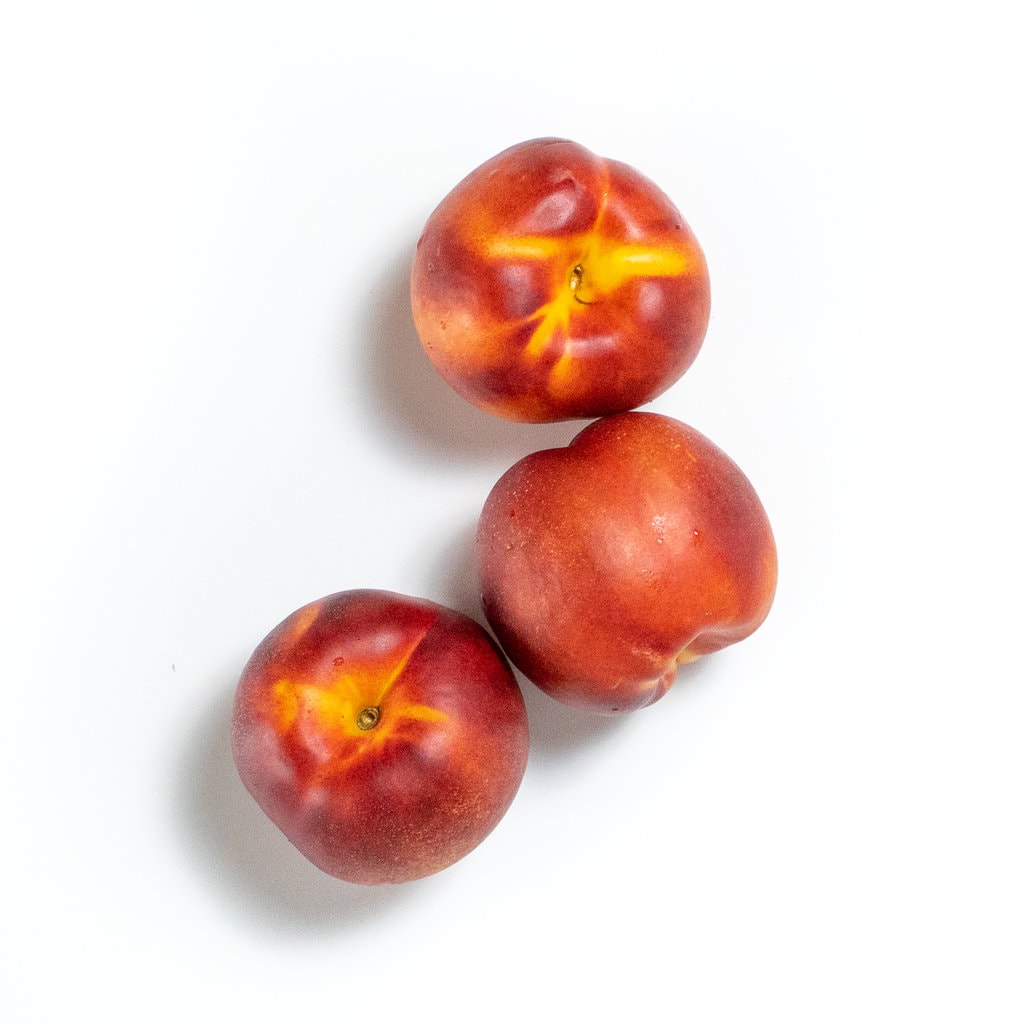
Reasons to Love Nectarines for Babies
- delicious baby food purees – 6+ months
- great for baby-led weaning – 6+ months
- also great for the finger food stage – 9+ months
- full of essential nutrients for baby
- easy stage one and combination puree
- different ways for baby to eat – spoon-fed or self-feed
- easy to make
Benefits of Nectarines
Like peaches, nectarines have tons of nutritious benefits, including:
- Vitamins C for iron absorption and immunity
- Potassium, and electrolyte necessary healthy muscle function and and E, a variety of B vitamins
- Fiber for healthy digestion
- And vitamin E, antioxidants, and a variety of B vitamins
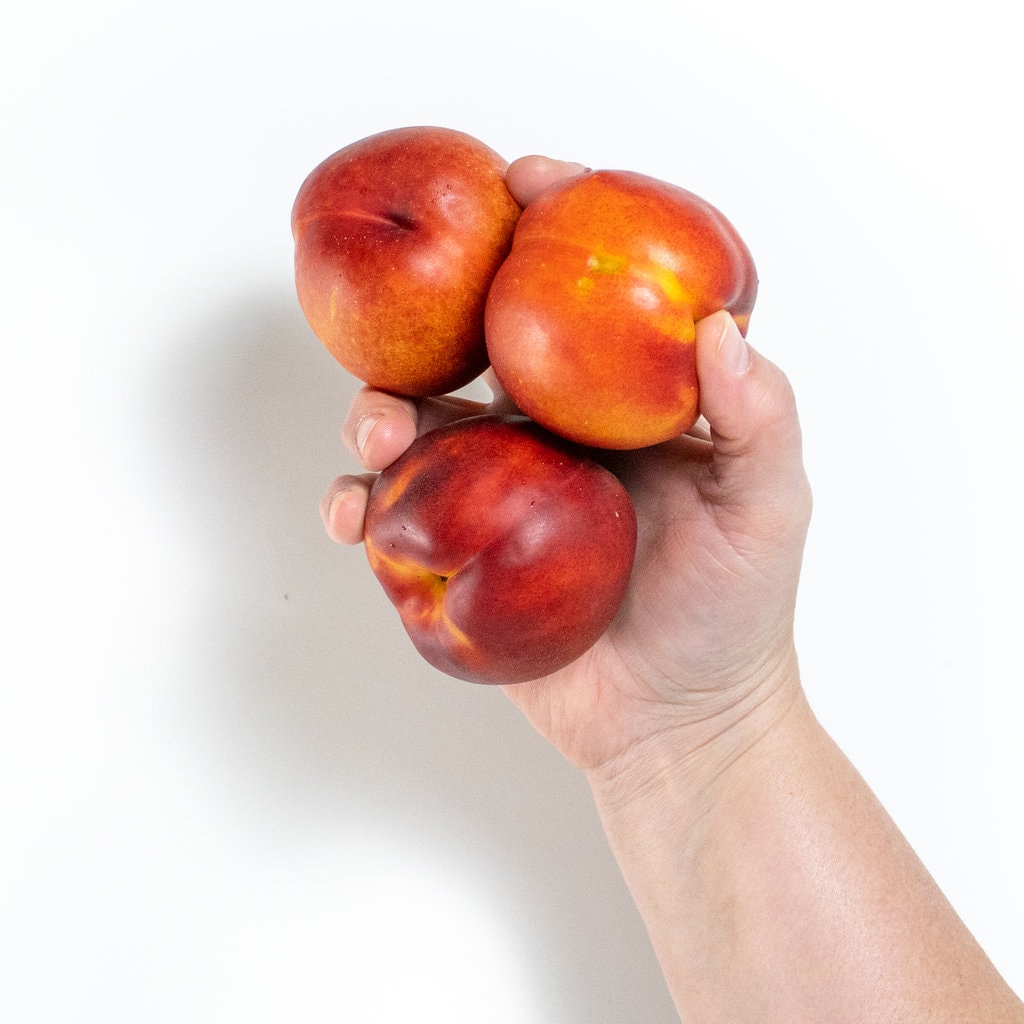
How to Pick Nectarines
Choosing nectarines at their peak ripeness will make them even more enjoyable. Here are some pointers to look for when picking nectarines:
- Firmness: a ripe nectarine should give slightly if you gently push on the skin with your fingers. If it is too hard, it is not ripe yet.
- Smell: ripe nectarines will smell more fragrant than unripe ones.
- Color: the skin color should be less green and more of a light yellow-orange, with a touch of red when ready and ripe.
Frequently Asked Questions
You can introduce nectarines to your baby as soon as they are ready to start solids, usually around 6 months of age.
Yes, they can be. Nectarines are slippery and often quite firm, unless they are very ripe. These two qualities can increase their choking risk. The hard pit inside should also be removed before serving to babies and toddlers.
No, nectarines are not a common allergen. As you would with introducing any new food, start by offering a small amount and monitor your baby as they eat for any adverse reactions.
No. In fact, nectarines are high in fiber which can help prevent constipation. However, consuming them in large quantities can have a laxative effect, so start by offering a small amount and gradually increase serving sizes until you know how your baby responds.
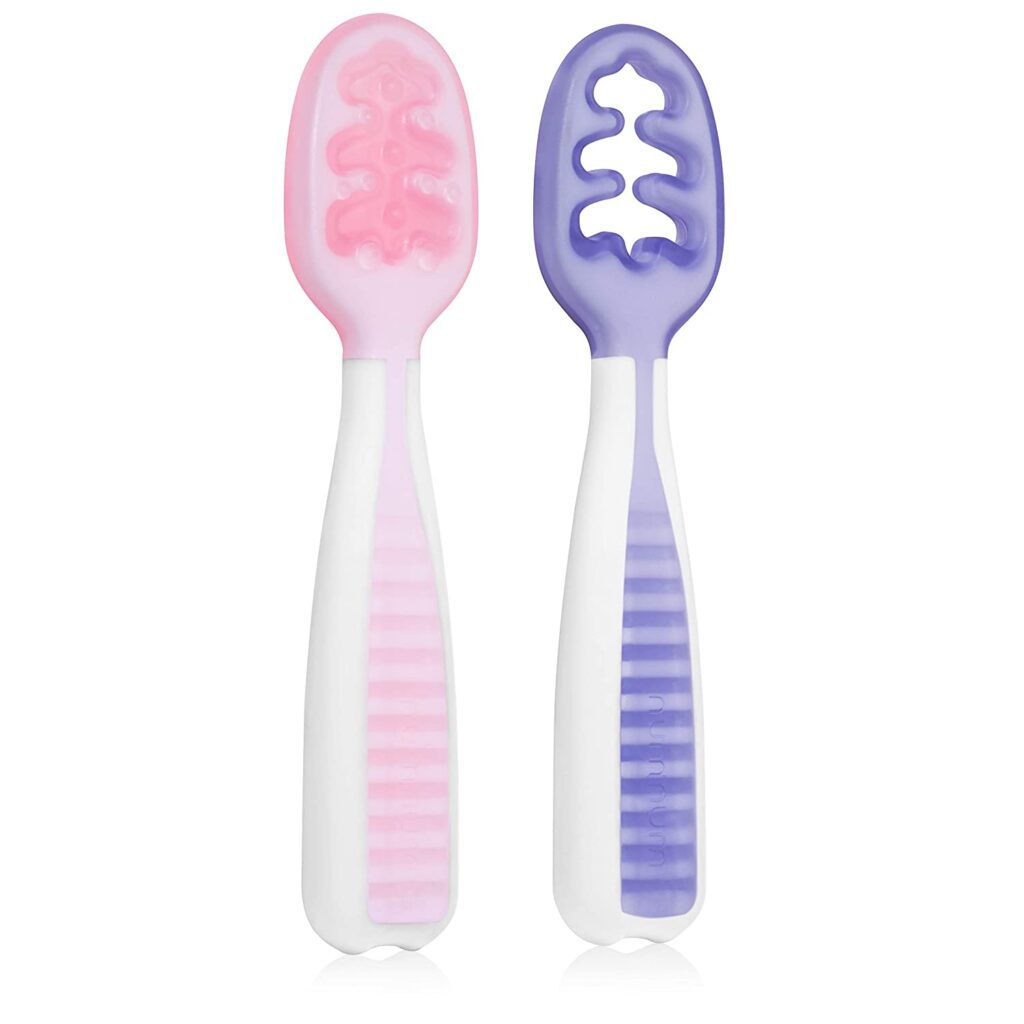
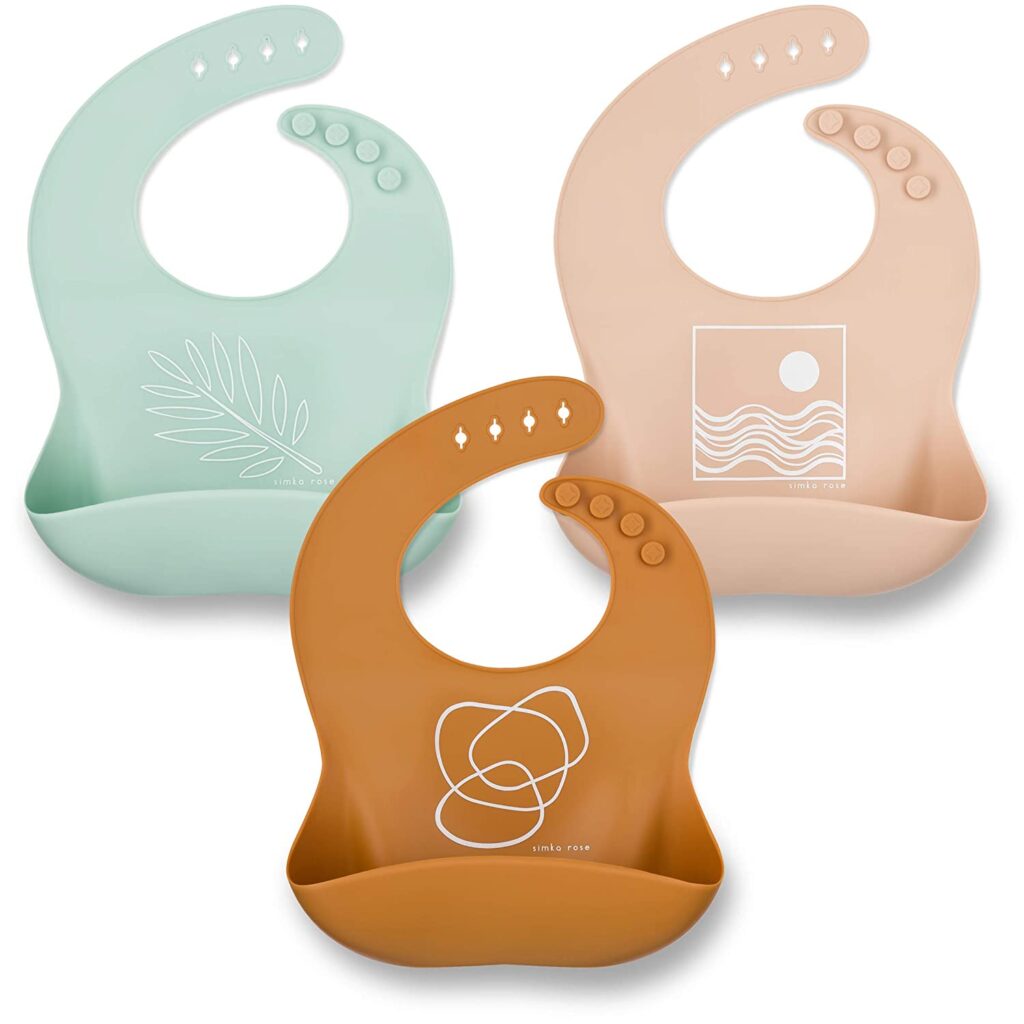
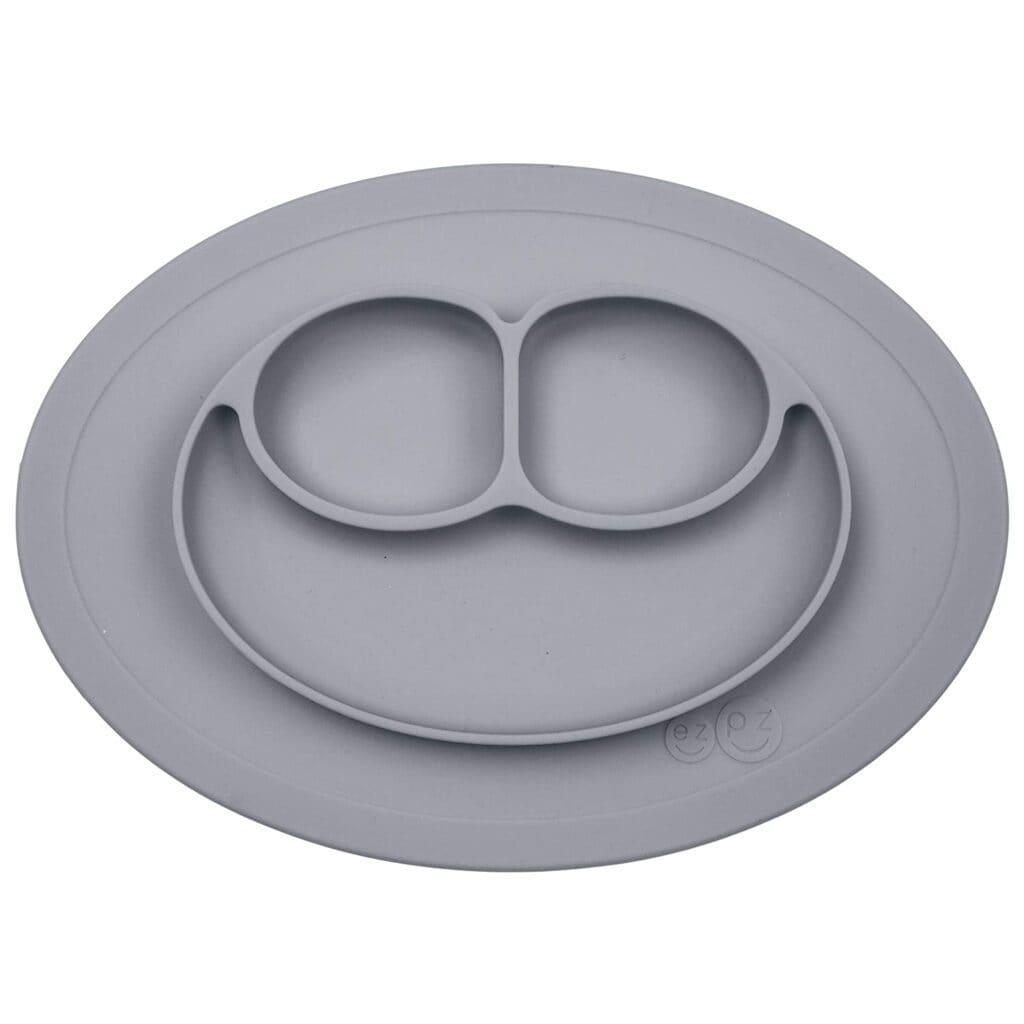
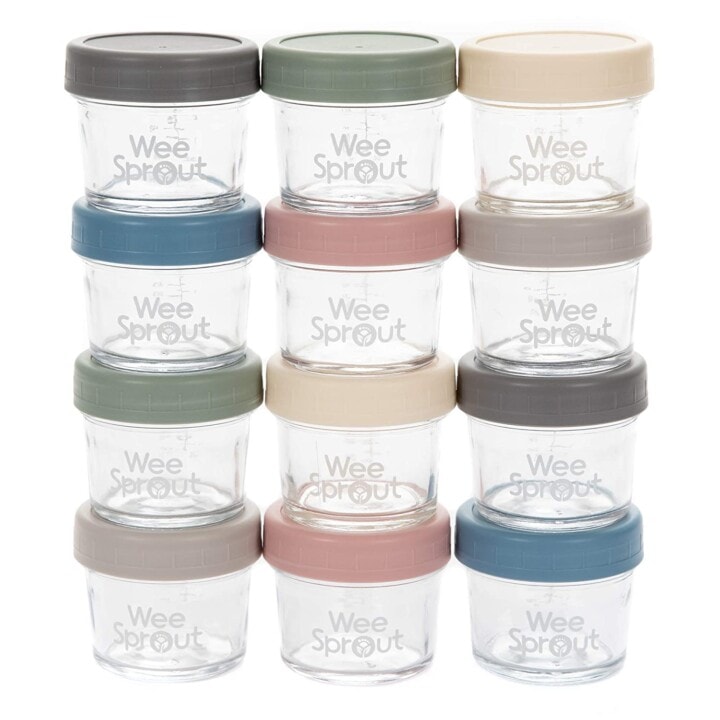
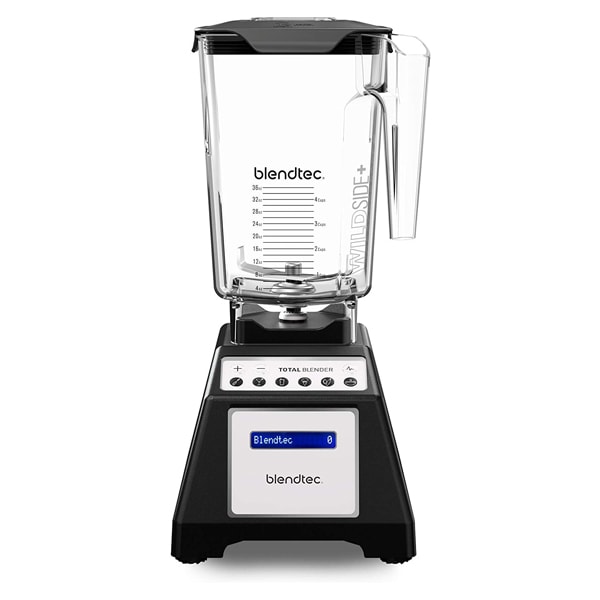
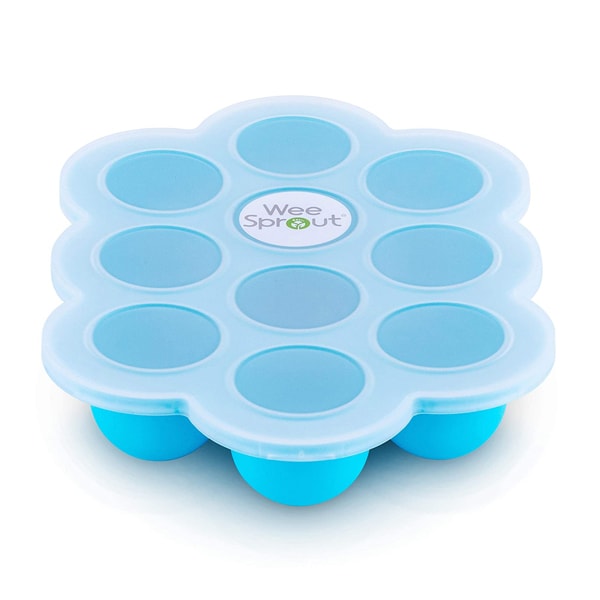
Tools Needed
These tools will make it a lot easier for you to serve nectarines to your baby. For more of my favorite kitchen tools, make sure to check out my shop.
Nectarine Puree
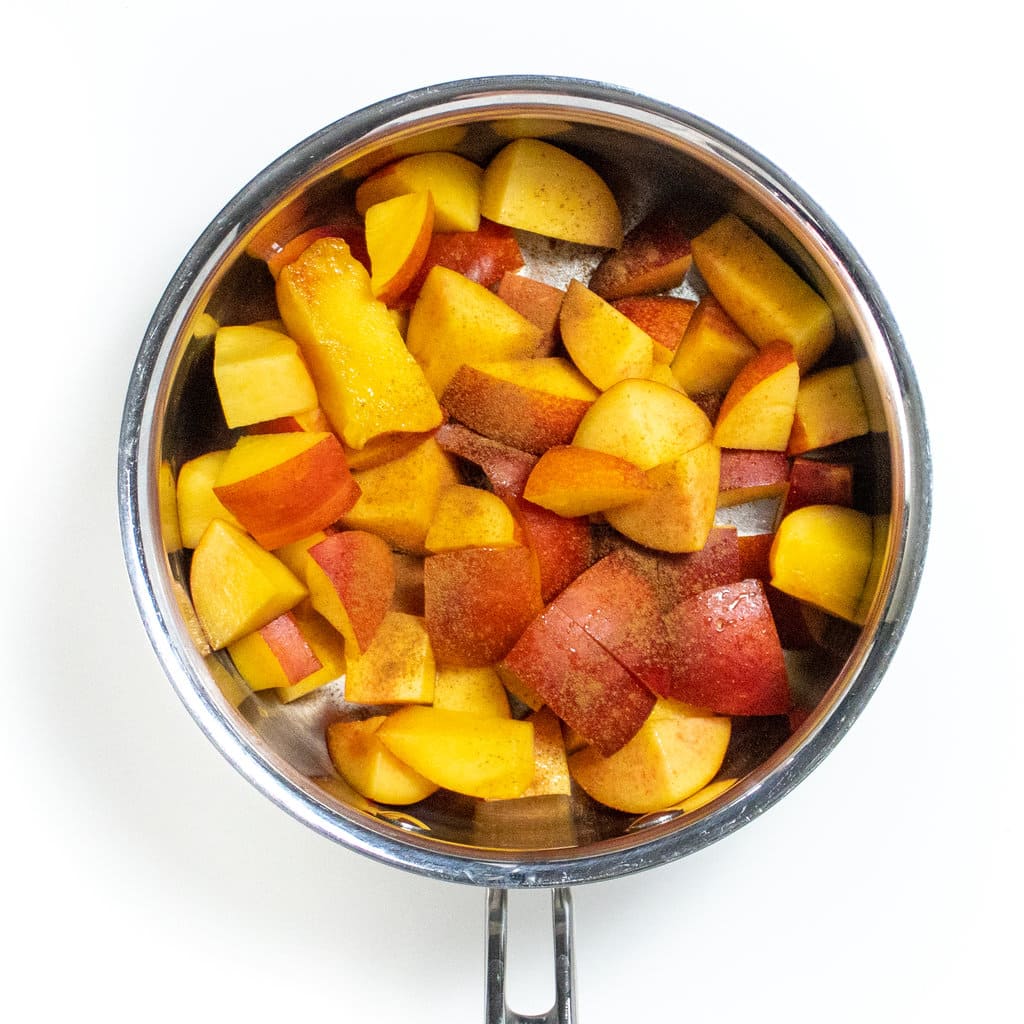
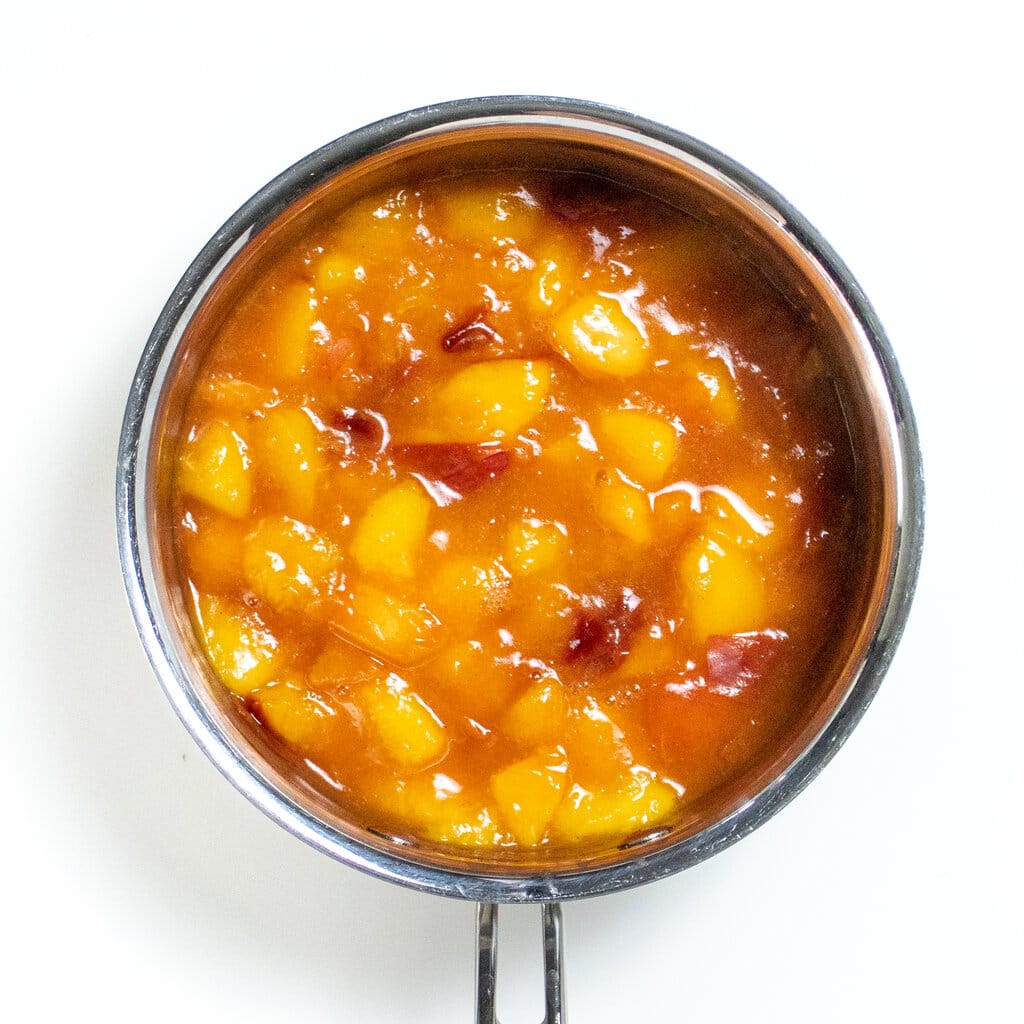
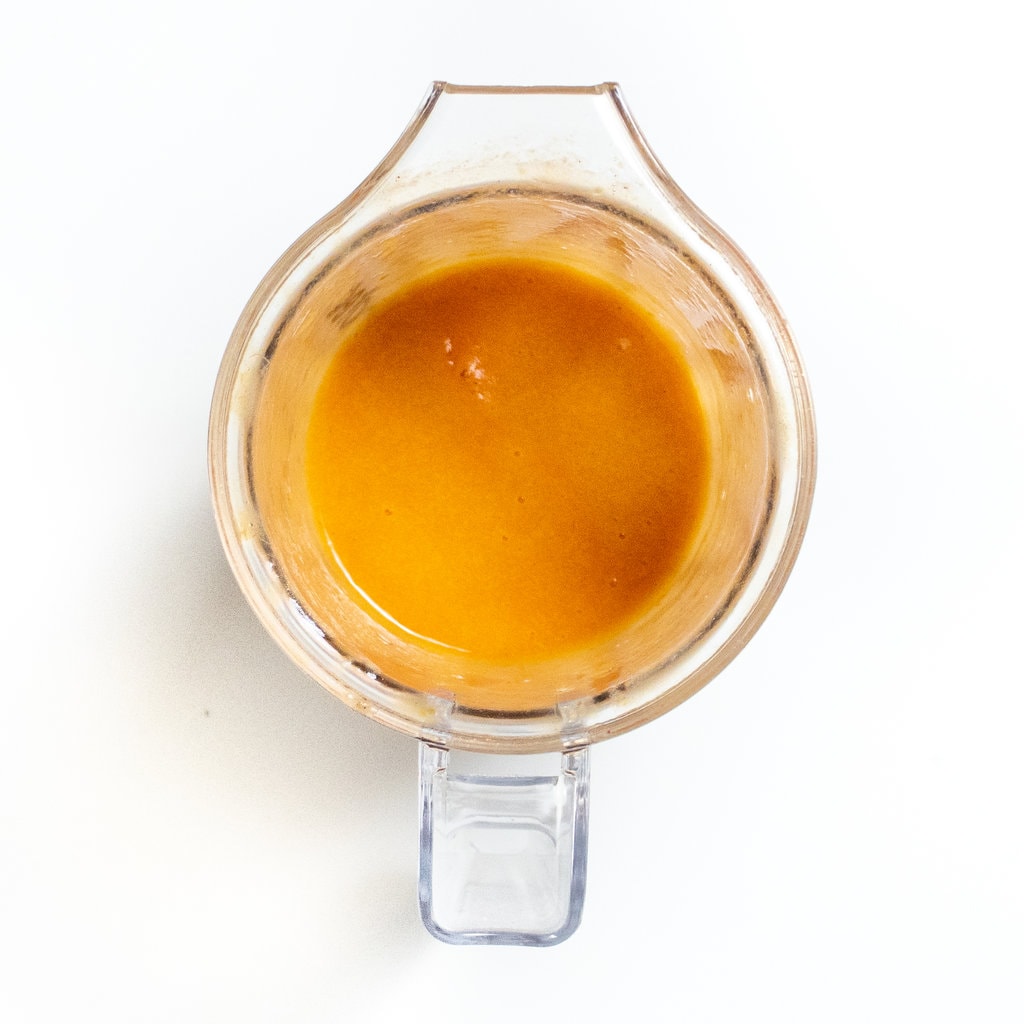
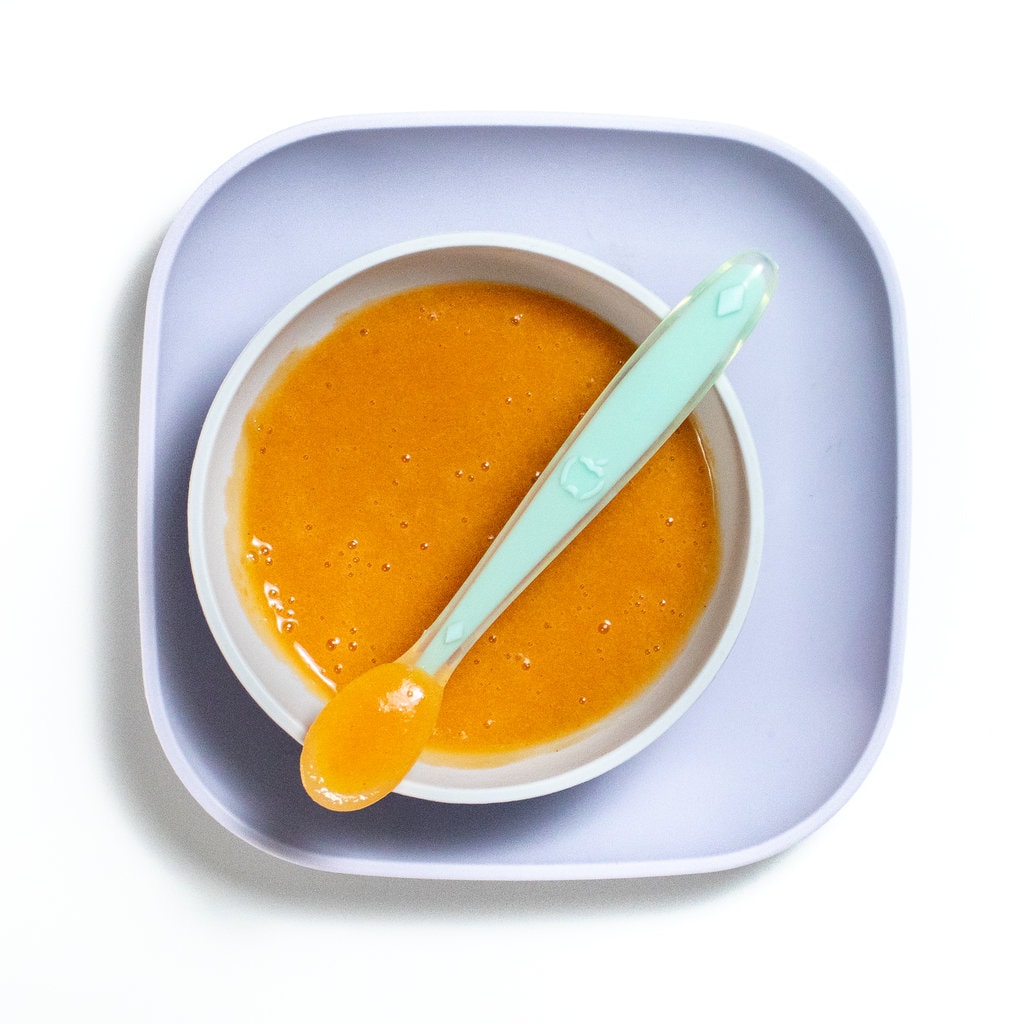
Making nectarine puree is simple! If you have very ripe and juicy nectarines, you can peel, remove the pit, and place the nectarines in a food processor or blender on high. If you have nectarines that are not quite ripe, you can chop them into chunks, add them along with a pinch of cinnamon or cloves to a small saucepan, and bring to a simmer before blending into a smooth puree. I love adding in a little pinch of clove, nutmeg or cinnamon seasoning to the puree for optimal flavor.
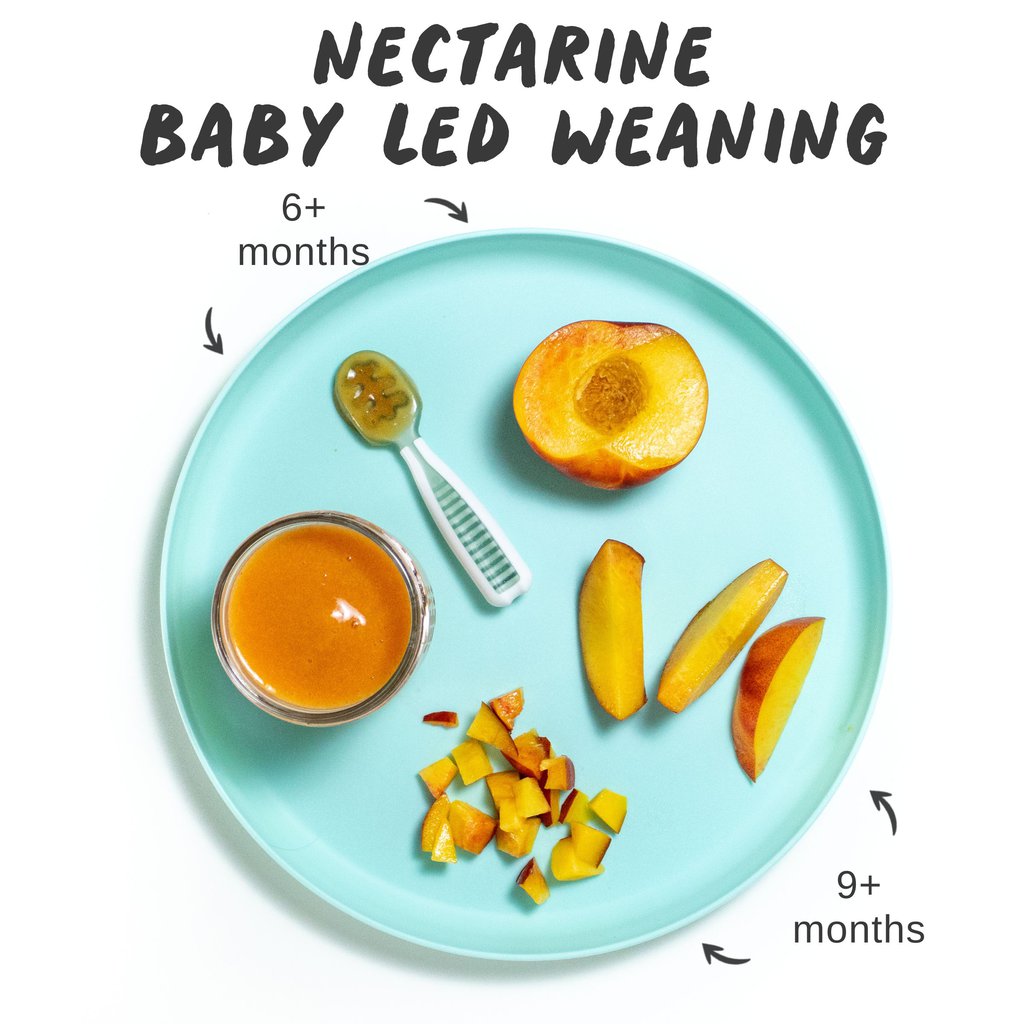
Nectarine for Baby-Led Weaning
Nectarines are a nutritious food for your baby to self-feed, whether for baby-led weaning, which happens around 6 months of age, or during the finger foods stage at 9 months.
Halved, ripe (6-9 months): Cut soft, ripe nectarines in half and remove the pit. A larger piece at this age helps your baby pick up this fruit easily. Feel free to leave the edible skin on (to help with grasping this slippery fruit) or you can peel it (and roll in finely crushed nuts, shredded coconut or hemp seeds).
Halved, sliced, or diced (9-12+ months): Halves or slices will still likely be the easiest for your baby to pick up at this stage. If cutting nectarines into smaller pieces to help your baby work on their pincer grasp, you will want to roll them in another ‘crumb’ food as mentioned above.
Halved or whole (18-24 months): Depending on your toddler’s skill level, you can try offering either halved nectarines (pit removed) or a whole one (with the pit) so they can practice taking properly sized bites, chewing and swallowing. You can peel the skin or keep it on, but just know that it’s typical for toddlers to spit out the skin as they’re learning to eat. If offering a whole nectarine, it’s best to model eating one yourself, so that you can show them how to practice eating around this part.
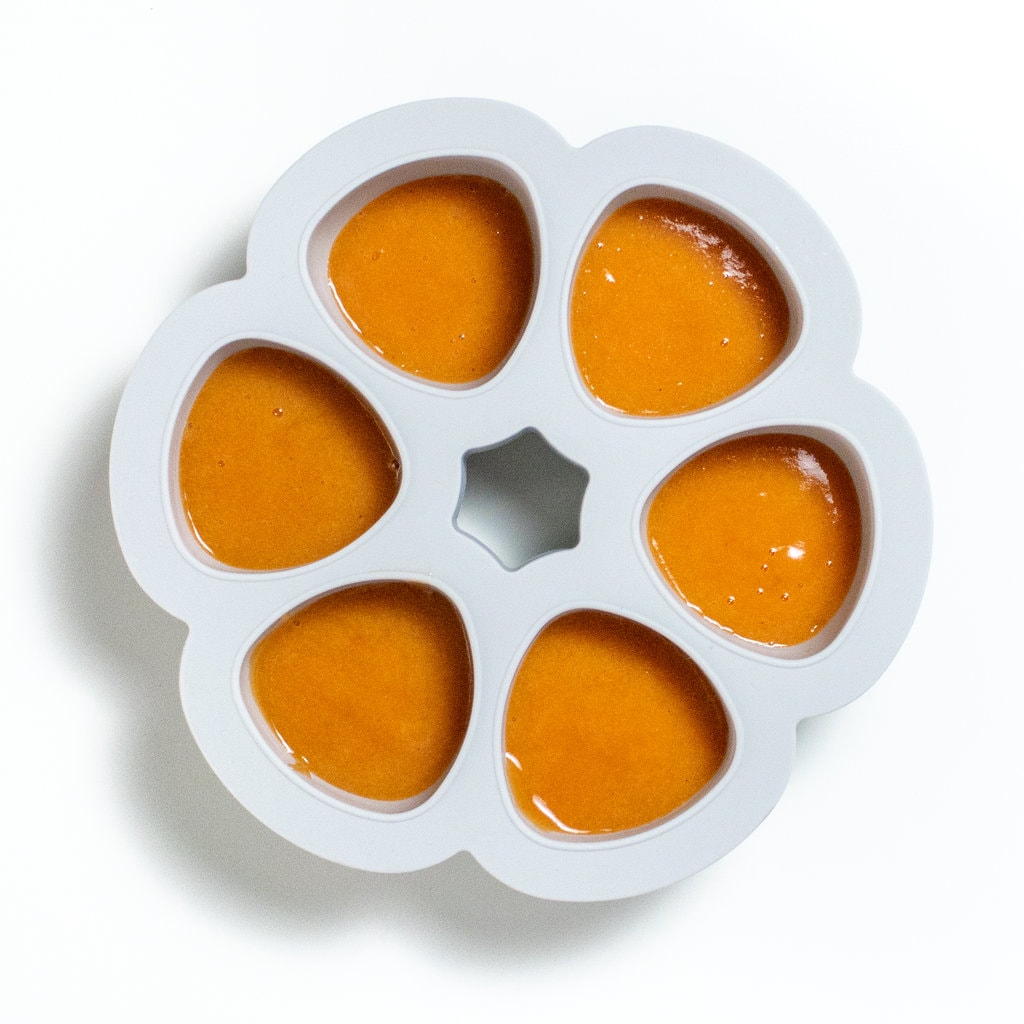
Storage Instructions
Nectarine Puree
Refrigerator
You can store it in an airtight container in the fridge for up to 4 days.
Freezer
This puree can be frozen for up to 4 months.
- Spoon puree into a freezer storage container – do not overfill.
- Place the lid on the storage container or cover it with a piece of saran wrap and label it with the date and recipe name.
- Place the tray into the freezer and let freeze completely – preferably overnight.
- Pop out the baby food cubes and place them in a zip-lock baggie or stasher bag – don’t forget to re-label the baggie or stasher bag for future reference.
Baby-Led Weaning
You can store cut nectarines in an air-tight container in the fridge for up to 2 days.
Combination Purees
While Nectarine Baby Food is great by itself, it’s also super easy to mix and match with other nutrient-dense baby food purees. Give these fun flavor combos a try!
More Nectarine Recipes
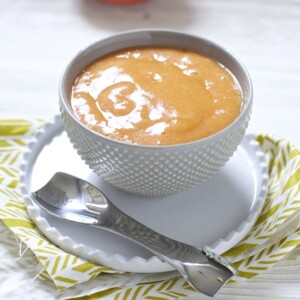
Expert Feeding Tips
- Pureed and mashed nectarines are also great for adding to yogurt, oatmeal, and other pureed fruits and veggies.
- Choosing organic nectarines when possible is preferred, as they are often heavily sprayed with pesticides. To minimize exposure, wash nectarines before serving.
- To remove the pit from a fresh nectarine, insert a sharp knife into the stem end; slice into halves lengthwise to the pit. Twist the two halves in opposite directions, separate them and remove the pit.
For Puree
- 4 nectarines, pitted and chopped
- 3 tbsp water
- pinch cinnamon, cloves or nutmeg
Yield: 2-3 portions for baby
Baby Puree: if you have very ripe nectarines, you can simply add them to a blender with a pinch of spice and puree until smooth.
Baby-Led Weaning:
Halved, ripe (6-9 months): Cut soft, ripe nectarines in half and remove the pit. A larger piece at this age helps your baby pick up this fruit easily. Feel free to leave the edible skin on (to help with grasping this slippery fruit) or you can peel it (and roll in finely crushed nuts, shredded coconut or hemp seeds).
Halved, sliced, or diced (9-12+ months): Halves or slices will still likely be the easiest for your baby to pick up at this stage. If cutting nectarines into smaller pieces to help baby work on their pincer grasp, you will want to roll them in another ‘crumb’ food as mentioned above.
Halved or whole (18-24 months): Depending on your toddler’s skill level, you can try offering either halved nectarines (pit removed) or a whole one (with the pit) so they can practice taking properly sized bites, chewing and swallowing. You can peel the skin or keep it on, but just know that it’s typical for toddlers to spit out the skin as they’re learning to eat. If offering a whole nectarine, it’s best to model eating one yourself, so that you can show them how to practice eating around this part.
Storage: for the puree – store in an air-tight container in the fridge for up to 4 months or in the freezer for up to 4 months. For baby-led weaning – you can store this recipe in the fridge in an air-tight container for up to 2 days.
Puree for Self-Feeding: Yes, it can be done! You can offer purees and still allow your baby to lead the way with self-feeding.
- Place a few spoonfuls of purees directly on the tray or in a bowl for your baby to dip fingers into. Model how to dip your fingers into the puree and bring them to your mouth, to taste some.
- Offer your baby a pre-loaded self-feeding utensil and hold it out for them to grasp or set on their tray.
- Use a solid food as a dipper. You can also offer a soft stick-shaped piece of food, such as a soft roasted carrot or bread lightly toasted and cut into strips to dip into the puree.


